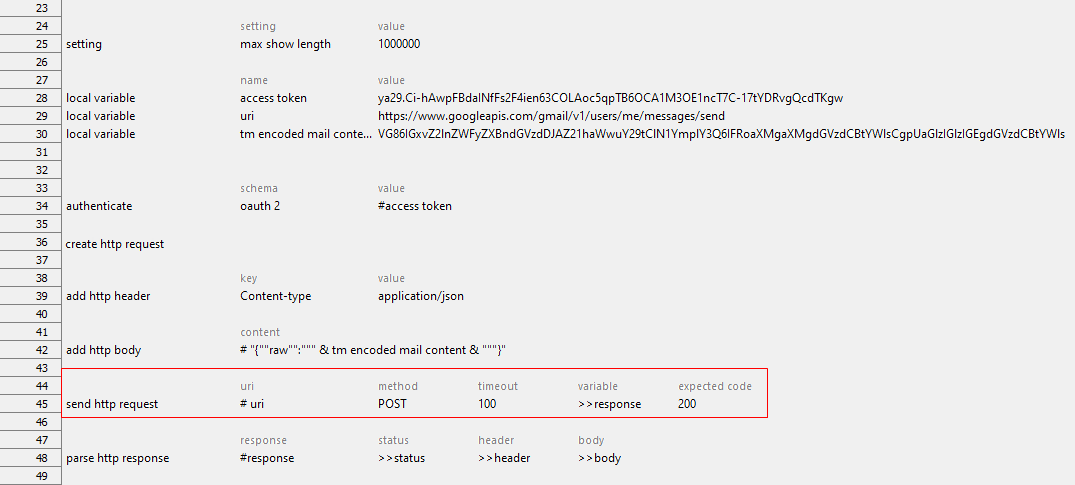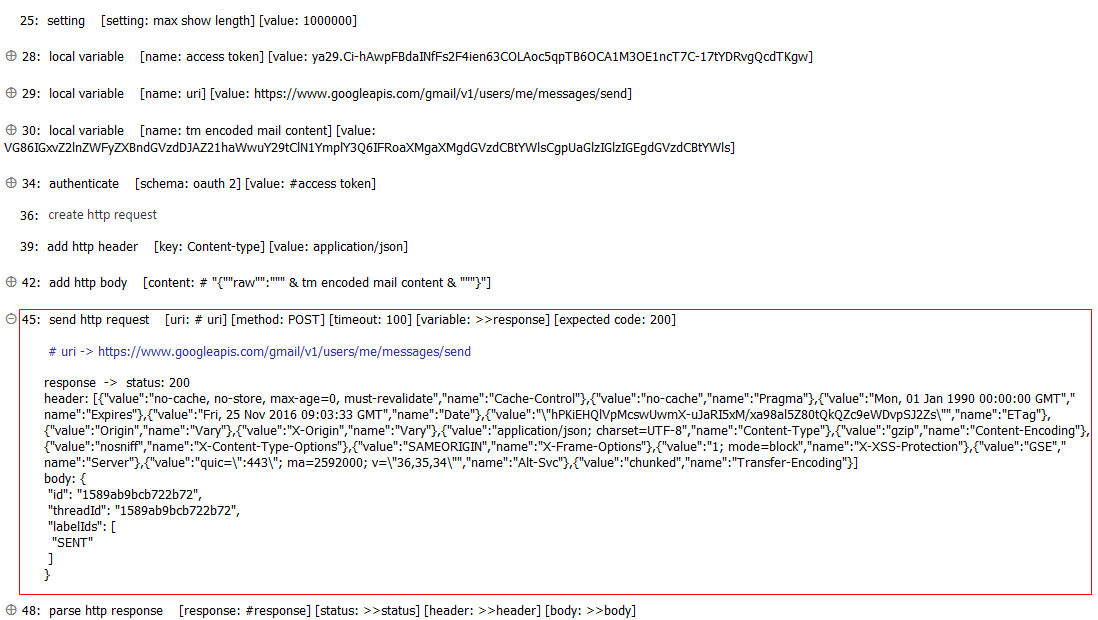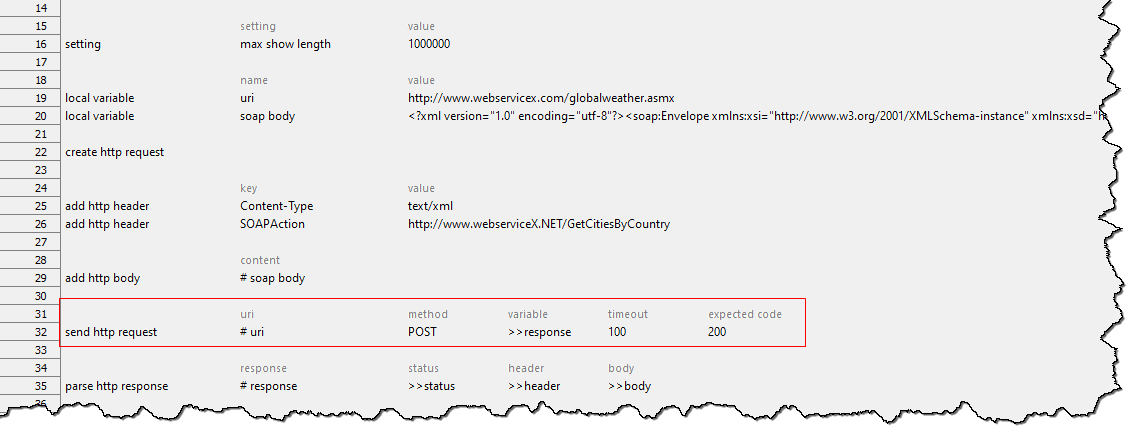send http request
Description
Send an HTTP request to a given resource.
Arguments
uri
Uniform Resource Identifiers (URI) to identify a resource
method
An HTTP request method
Possible values:
- GET: Request data from a specified resource.
- POST: Submit data to be processed to a specified resource.
- PUT: Replace all the current representations of the target resource with the uploaded content.
- DELETE: Remove all the current representations of the target resource given by URI.
- PATCH: The PATCH method is used to apply partial modifications to a resource.
- HEAD: The HEAD method asks for a response identical to that of a GET request, but without the response body.
- OPTIONS: The OPTIONS method is used to describe the communication options for the target resource.
timeout
(Optional) Amount of time to wait for an HTTP response from the server. (units: seconds; default = 300 ).
variable
(Optional) Variable to store the HTTP response
expected code
(Optional) Expected HTTP status code of the response (see Notes)
response file
Full path of file location to which to save the returned response body on the test machine.
Valid contexts
This action may be used within the following project items: test modules and user-defined actions.
Notes
Supported web services:
An HTTP request must be instantiated via create http request before calling this built-in action.
variable argument:
- If the variable in argumentvariablehas not been declared, the action creates it as a global.
- If the variable argument is left empty, TestArchitect supplies a global variable with the name _result.
expected code argument:
- Enter an expected HTTP status of the response. For example, 200 means that the request was successfully received, understood, and accepted. For a full list of HTTP status code, refer to Status Code Definitions.
- When this value is provided, TestArchitect compares the returned status code against the expected status code. An automation error is generated, if these two values do not match each other.
response file argument: A full filename and extension must be declared. Otherwise, TestArchitect reports a warning automation and this argument is ignored.
Note:- Network resources and mapping network drives are also supported.
- On Windows: In order to specify mapping network drives, please disable User Account Control (UAC).
In order to see full result returned from this built-in action, set max show length to a higher value.
This action supports the <ignore> modifier. If the string
<ignore>is present as the value of any of the arguments, or any argument contains an expression that evaluates to<ignore>, the action is skipped during execution.
Applicable Built-In Settings
The following settings are applicable to this action: remove double quotes from cells.
Example - Case 1: Testing a given Google API to send a message to a recipient
Suppose that you’d like to test a given Google API to send a message to a recipient with the following information:
API under test: Users.messages: send
URI:
https://www.googleapis.com/gmail/v1/users/me/messages/sendAuthentication scheme:
OAuth 2.0Header fields:
Content-type: application/jsonIn the request body, supply a Users.messages resource with the following property as the metadata.
Table 1. Request body
Property name Value Description raw bytes The entire email message in base64url encoded string. Tip:To encode a plain text string into a base64url encoded string, you can use the Online Base64URL encoder tool.Raw body content:
To: logigearepgtest2@gmail.com Subject: This is a test mail This is a test mailBase64url encoded body content:
VG86IGxvZ2lnZWFyZXBndGVzdDJAZ21haWwuY29tClN1YmplY3Q6IFRoaXMgaXMgdGVzdCBtYWlsCgpUaGlzIGlzIGEgdGVzdCBtYWlsRequest body declared in JSON format
{"raw":"base64url encoded string"}
Action Lines
Result
Effect
Example - Case 2: Testing SOAP over HTTP-based web services
Suppose that you’d like to test a given API of the GlobalWeather web service to get all major cities by a specific country name.
API under test: GetCitiesByCountry
Header fields:
Content-Type: text/xmlSOAPAction: http://www.webserviceX.NET/GetCitiesByCountry
In the request body, get all major cities of Australia.
<?xml version="1.0" encoding="utf-8"?> <soap:Envelope xmlns:xsi="http://www.w3.org/2001/XMLSchema-instance" xmlns:xsd="http://www.w3.org/2001/XMLSchema" xmlns:soap="http://schemas.xmlsoap.org/soap/envelope/"> <soap:Body> <GetCitiesByCountry xmlns="http://www.webserviceX.NET"> <CountryName>Australia</CountryName> </GetCitiesByCountry> </soap:Body> </soap:Envelope>
Action Lines
Example - Case 3: Retrieving an attachment through returned response body
Suppose that you’d like to test a given API web service to return an image through an HTTP GET.
- Full path of file location to which to save the returned response body on the test machine: D:\TestData\tmp\testfile.png
Action Lines
Related concepts